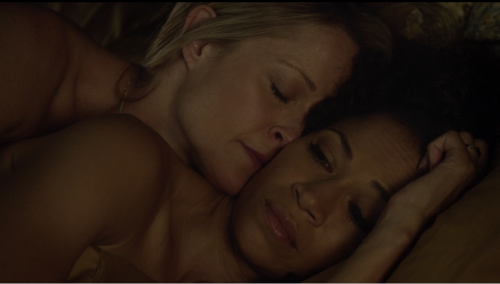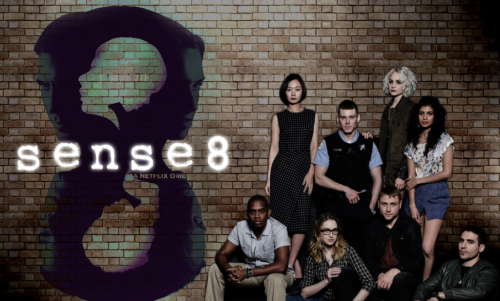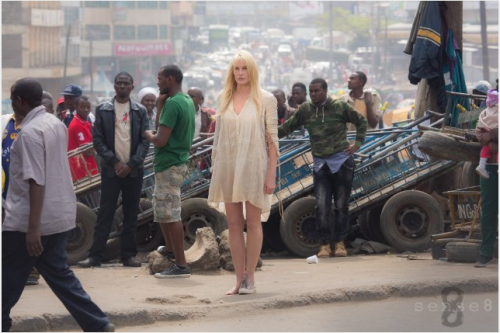Virtue, Vulgarity, and the Vulva by Erin Relford
The equality of men and women on the basis of healthy and consensual sex is sex positivity according to the Women and Gender Advocacy Center. Thus, to desire sex positivity is to be inherently feminist.
Clitoral Readings of The Piano, Turn Me On, Dammit, and Secretary by Brigit McCone
But how can female arousal be visually expressed? If women stereotypically prefer to read literary erotica over watching porn, with erotica’s descriptions of the interior sensations of female arousal, is that because many women imagine that female performers of porn are uncomfortably simulating their pleasure? Can there be a clitoral cinema of female arousal, and what would it look like?
Let’s Talk About Sex (Positivity for Women) in Animated Comedies by Belle Artiquez
There are animated shows that do present female sex positivity and appear to subvert the current patriarchal control of female sexuality in media. Archer and Bob’s Burgers are both refreshing examples of portrayals of positive female sexuality.
Miss Fisher’s Murder Mysteries: Killing the Stigma of Sex by Emma Thomas
Besides occasional sex jokes, Miss Fisher’s Murder Mysteries features episodes about vibrators, abortion, and women’s rights. It also highlights a wealth of one-night stands, and while the men are attractive, the camera glances over the bodies of Miss Fisher’s lovers as lovingly as it does her gorgeous outfits. It is, in an odd way, the perfect combination of the male and female gaze.
Yas Queen!: In Praise of Female Friendship and Sex Positivity on Broad City by Alexandra Shinart
As emerging adults, Abbi and Ilana are free to explore their sexuality as they choose. Choosing to be sexually active means the women have the possibilities of exploring love and sex, casual or within a relationship, in a way that best serves them as 20-something single women. Although Abbi and Ilana each explore their sexuality differently, the women share a common mentality- that they will embrace the many sexual adventures they embark on and support and empower each other every step of the way.
The Audacity of Sex and the Black Women Who Have It by Reginée Ceaser
Being Mary Jane provides the dialogue and the safety net in saying out loud ,”I see you, I’ve been there too and you are not alone.” The embracing of positive sexuality of Black women on television is not progressive feminism. It is the hope that future depictions of such will not be labeled progressive, but just as common as the stereotypes that have lingered for too long.
Slaying Dudes and Stealing Hearts: The Tell-All Sexuality of Mindy Lahiri by Shannon Miller
Sex positivity, for instance, is frequently presented in an oversimplified, inaccurate package of rampant promiscuity and generally assigned to a side female character, like a free-spirited best friend or sister. Meanwhile, the main character frequently serves as the antithesis to said behavior who is later rewarded with “true love.”
The To Do List: The Movie I’ve Been Waiting For by Leigh Kolb
And then I saw it–a film that extols the importance of female agency and sexuality with a healthy dose of raunch, a film that includes a sexually experienced and supportive mother, a film that celebrates female friendship and quotes Gloria Steinem, a film that features Green Apple Pucker and multiple references to Pearl Jam and Hillary Clinton.
Yes. This is it.
Concussion: When Queer Marriage in The Suburbs Isn’t Enough by Ren Jender
This film about a queer woman is, unlike the same year’s Blue Is The Warmest Color, directed and written by a queer woman (Stacie Passon who was nominated for “Best First Feature” in the Independent Spirit Awards and will be will direct an episode of Transparent this coming season), and in many aspects is the answer to those who dismissed Blue as a product of the male gaze.
The Day Mindy Lahiri Ate Seashells and Called Me Immature by Katherine Murray
I like Mindy Kaling and I like her show, but the season premiere demonstrates how, like many series, The Mindy Project has ambivalent feelings about what kind of sex is OK.
To Boldly Go: Star Trek: The Next Generation Explores the Limits of Sexual Attraction in “The Host” by Swoozy C
Once Beverly decides that so little of her attraction to Odan was wrapped up in his host body, the floodgates of sex, sexuality, gender, and physical attraction were wide open.
The Fosters, Sexuality, and the Challenges of Parenting While Feminist by Stephanie Brown
In Stef and Lena’s case, they face the much more complicated question of how to talk to their kids about sex in a way that balances their feminist ideals of sex positivity with their parental need protect and discipline their kids. Two scenes in particular stand out to me as exemplars of the ways in which Lena and Stef strive to make sure their kids are not ashamed of their sexuality while simultaneously conveying the importance of being safe, ready, and responsible.
Starlet and Tangerine: A Look At the Sex Work Industry Through the Lens of Chris Bergoch and Sean Baker by BJ Colangelo
Sean Baker and Chris Bergoch are spreading an important truth with their films: that sex does not have to be definitive. Tangerine and Starlet are two monumentally groundbreaking films, and they should be required viewing for all.
“I Want to Slap His Hideous, Beautiful Face”: Sexual Awakenings and First Crushes in Bob’s Burgers by Becky Kukla
Honestly, Tina Belcher is the role model young girls have been waiting for, and I’m so glad she’s finally arrived. However, “Boys 4 Now” – the episode that made me really believe Bob’s Burgers is *probably* the best show I’ve ever watched – deals with Louise getting her first crush. Rage-filled, insane, absolute genius Louise gets a crush on a boy. Unsurprisingly, she does not take this news well.
How the CW’s The 100 Is Getting Sex Positivity Right by Rowan Ellis
In fact, it’s the aspect of love and intimacy, rather than lust and sexuality, which makes Clarke’s part in Finn’s demise so difficult–the show plays with the idea that human connection, whether it’s through friendship, family, alliance or romance, is painful because it matters, not because it is fundamentally wrong.
Sex Worker Positivity in Satisfaction by Cameron Airen
Normalizing all sexual fantasies seems to be one of the main themes of the show. ‘Satisfaction’ offers a lot of varied sex positivity onscreen that centers on women. The show sets an example for what more television shows and films could portray when it comes to women, sexual desires, and sex work.
The Honest Sexcapades in You’re The Worst by Giselle Defares
Gretchen leaves Jimmy and states, “Well as my grandma used to say, ‘It’s only a walk of shame if you’re capable of feeling shame.’ See you later, thanks for doing all the sex stuff on me.”
Unity Through Differentiation: The Radical Sex Positivity of Sense8 by Emma Houxbois
The net effect, woven throughout the series, is a sex positivity that both embraces differentiation and recognizes the universal experiences that can work to close gaps of gender, orientation, and race that routinely stymie the discourse.
Living Single and Girlfriends: The Roots of Sex Positivity for Black Women on TV b
y Lisa Bolekaja
There were never any shows that centered happy, single, child-free Black women that prioritized good sex as part of successful living. That is until two television shows came on the scene, Living Single (1993-1998, created by Yvette Lee Bowser) and Girlfriends (2000-2007, created by Mara Brock Akil).














